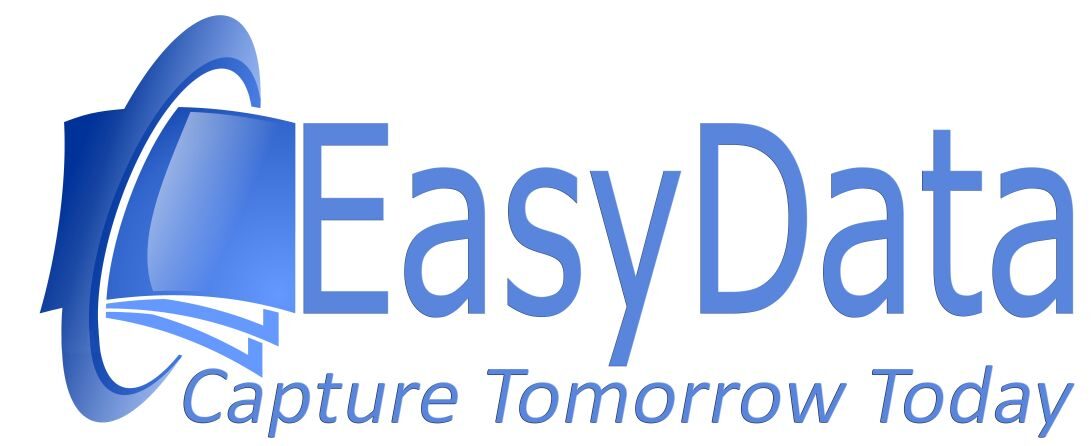UBL Invoicing 100% Automated
98% accurate UBL processing,
GDPR-compliant, 100% European!

Why UBL Invoices Lead in Digital Invoicing
UBL invoices represent efficient, error-free invoice processing. Companies process thousands of invoices daily – UBL invoicing eliminates manual entry and drastically reduces processing time from hours to seconds.
EasyData’s UBL invoice expertise combines 25+ years of experience with modern XML technology. Our European approach delivers measurable results: implementation within 8 weeks, cost savings up to 83% on invoice processing, with full GDPR compliance as European organizations expect.
From PEPPOL integration for European supply chains to ZUGFeRD compatibility for international trade. UBL invoices deliver concrete business value that is immediately visible in your business results.
UBL Invoices in Numbers: Proven Results
Discover how UBL invoicing evolved from EDI pioneers to the standard for modern e-invoicing. Learn how your organization can benefit from automated invoice processing.

Why Invest in UBL Invoices Now?
- Accelerates digital transformation in financial processes
- Complies with government guidelines for e-invoicing (PEPPOL)
- Completely eliminates human errors in invoice processing
- Supports European compliance and GDPR legislation
- Makes real-time financial insights accessible for CFOs
Organizations that invest in UBL invoices now benefit from 6x faster processing, structurally lower costs, and complete control over their financial processes. Read more about UBL invoice automation at EasyData.
UBL Invoice Applications by Sector
Government & Public Sector: PEPPOL-Compliant UBL Invoicing
EasyData’s UBL invoice solutions help government institutions comply with mandatory e-invoicing requirements. Our PEPPOL-certified solutions process incoming and outgoing UBL invoices fully automatically according to government guidelines.
- 100% PEPPOL-compliant for required government invoicing
- Automatic validation according to European standards
- Integration with municipal and provincial financial systems
- Complete audit trail for transparency and accountability
Wholesale: Volume UBL Invoice Processing at Scale
For wholesale businesses, EasyData offers UBL invoicing solutions that process thousands of invoices per day. Our systems integrate seamlessly with ERP systems like SAP, Microsoft Dynamics, and others for streamlined order-to-cash processes.
- Processing of 10,000+ UBL invoices per day without errors
- Automatic matching of purchase orders with UBL invoices
- Multi-supplier UBL onboarding within 48 hours
- Real-time dashboards for financial controllers
SME Business: Affordable UBL Invoicing Without Complexity
EasyData makes UBL invoices accessible for SMEs. No expensive ERP implementations needed – our PDFCommunicator automatically transforms existing PDF invoices to UBL XML format for incoming and outgoing invoices.
- Plug-and-play UBL conversion without IT department required
- Cost savings from the first month by eliminating manual entry
- Compatible with all major accounting packages
- Local support in your language, available during business hours
Accountancy: Multi-Client UBL Invoice Processing
Accounting firms benefit from EasyData’s multi-tenant UBL invoicing platform. Manage UBL invoices for dozens of clients from one central interface with separate data storage and full GDPR compliance.
- Central processing of UBL invoices for all SME clients
- Automatic export to client-specific accounting packages
- Monthly reports and reconciliation per client
- White-label options for your accounting firm branding
The EasyData UBL Invoice Method
📄 UBL XML Generation
Automatic conversion of PDF invoices to validated UBL 2.1 XML according to European standards. Compatible with PEPPOL, and all major accounting packages.
🔍 Invoice Recognition
Intelligent OCR technology recognizes all invoice fields including line items, VAT calculations, and IBAN numbers with 98% accuracy, even with deviating invoice formats.
✅ UBL Validation
Real-time validation of UBL XML structure according to UBL 2.1 specifications. Automatic check on mandatory fields, VAT calculations, and IBAN numbers according to European norms.
🔗 ERP Integration
Seamless connection with SAP, Microsoft Dynamics, and other ERP systems. API-first architecture for custom integrations within days.
📊 PEPPOL Connectivity
Directly connected to the PEPPOL network for sending and receiving UBL invoices to government agencies and PEPPOL-registered trading partners throughout Europe.
🛡️ GDPR Compliance
Full GDPR compliance with European data storage, encryption at rest and in transit, detailed logging, and GDPR contracts. Registered with Data Protection Authority.
Our UBL Invoice Implementation Process: From Intake to Live
Week 1-2: Intake & Invoice Analysis
Thorough analysis of your current invoice processes and supplier formats. Identification of UBL use cases and ROI potential. Creating implementation roadmap with concrete milestones and quick wins.
Week 3-4: Configuration & Testing
Setup of UBL conversion templates, ERP connections, and validation rules. Testing with sample invoices from your suppliers. Fine-tuning recognition for optimal accuracy on your specific invoice formats.
Week 5-6: Pilot & User Training
Pilot with selection of suppliers and invoice flows. Training of users in the system. Monitoring and optimization based on real-world processing. Documentation provided.
Week 7-8: Go-Live & Handover
Full production implementation with all suppliers and invoice flows. Handover to your team with local support. Continuous monitoring and monthly optimization reports. Success metrics tracking and ROI validation.
UBL Invoices: Standards and International Compatibility
EasyData supports all relevant UBL and e-invoicing standards for the European market and international trade:
🇪🇺 UBL 2.1 Europe
Full support for European UBL 2.1 specification. Used by all major ERP packages and accounting programs.
🇪🇺 PEPPOL BIS
PEPPOL Business Interoperability Specifications for cross-border e-invoicing within the EU. Mandatory for government invoicing in many countries.
🇩🇪 ZUGFeRD
German hybrid PDF/XML format for invoices. Important for companies with German trading partners. Compatible with ZUGFeRD 2.1.1 and Factur-X.
🇧🇪 e-FFF UBL
Belgian variant of UBL 2.0 for electronic invoices. Essential for companies with Belgian customers.
📋 EN 16931
European standard for electronic invoicing. All EasyData UBL implementations comply with this EU directive for future-proofing.
🔄 Custom XML
Flexible XML export for proprietary formats of specific ERP systems or industry-specific requirements like UBL healthcare.
Related EasyData UBL Invoice Solutions
UBL invoicing is part of our broader portfolio of intelligent document automation. Discover how our PDFCommunicator can accelerate your UBL invoice projects, or learn more about traditional invoice recognition as an alternative for organizations not yet UBL-ready.
For specific implementation challenges like PEPPOL connection or ZUGFeRD compatibility, check our UBL XML specialist page. Want to see how other companies have successfully implemented UBL invoices? Check out our success stories for measurable business results.
Frequently Asked Questions About UBL Invoices
What is the difference between UBL invoices and traditional PDF invoices?
A UBL invoice consists of a machine-readable XML file (Universal Business Language) alongside the visual PDF invoice. While a traditional PDF invoice requires manual entry, the UBL XML file contains all invoice data in a structured format that can be directly read by accounting systems. This eliminates typos, reduces processing time from hours to seconds, and ensures 100% accurate bookings.
Is UBL invoicing mandatory in Europe?
UBL invoicing via PEPPOL is mandatory for suppliers to many European governments. For B2B transactions between companies, UBL is not legally required in most countries, but more and more companies are demanding UBL invoices from their suppliers due to efficiency gains. EasyData helps you comply with these requirements with PEPPOL-certified UBL solutions.
Can I create UBL invoices from my current invoicing system?
Yes, with EasyData’s PDFCommunicator you can generate UBL invoices from virtually any system. Create your invoices in Word, Excel, your own software, or even manually as PDF? PDFCommunicator automatically converts these to valid UBL 2.1 XML with all mandatory fields. No expensive ERP upgrade needed – you continue working as you’re used to, while we ensure PEPPOL-compliant UBL output.
How long does implementation of UBL invoice processing take?
EasyData implements UBL invoice processing within 8 weeks from intake to live production. Week 1-2: analysis and configuration. Week 3-4: testing with your suppliers. Week 5-6: pilot and user training. Week 7-8: full go-live with handover. For smaller implementations, we can often go live within 4 weeks. Larger enterprise implementations with complex ERP integrations take a maximum of 12 weeks.
What happens with suppliers who cannot deliver UBL invoices?
EasyData’s hybrid approach combines UBL invoicing with traditional OCR invoice recognition. Suppliers who can deliver UBL are processed directly via XML. For suppliers who only send PDF, our intelligent OCR automatically converts the invoice data to the same internal format. This way you maintain one uniform process regardless of your suppliers’ delivery format. This prevents you from having to force suppliers to support UBL.
What are the costs of UBL invoice processing at EasyData?
EasyData offers flexible pricing models for UBL invoice processing: starting from €295/month for SMEs with up to 100 invoices per month, to enterprise solutions for volumes of 10,000+ invoices. Implementation from €2,500 one-time. No lock-in, monthly cancellable. ROI is usually achieved within 6-12 months by eliminating manual entry costs (average €8-12 per invoice). We always offer a free feasibility analysis and cost-benefit calculation specific to your situation.
Is EasyData connected to the PEPPOL network?
Yes, EasyData is a certified PEPPOL Access Point Provider. This means you can send UBL invoices directly via EasyData to government agencies and all PEPPOL-registered companies in Europe (45+ countries). You get your own PEPPOL ID with which you are identifiable on the network. EasyData handles all technical complexity – you just need to deliver your invoice.
Ready to Transform from Manual Invoice Processing to 100% Automated UBL Invoicing?
EasyData’s UBL invoice solutions deliver proven 98% processing accuracy, cost savings up to 83% in the first year, and 6x faster invoice processing through automated European processes. Join 100+ organizations in government, wholesale, SME, and accountancy who have strengthened their financial processes with our UBL invoice expertise of more than two decades.

